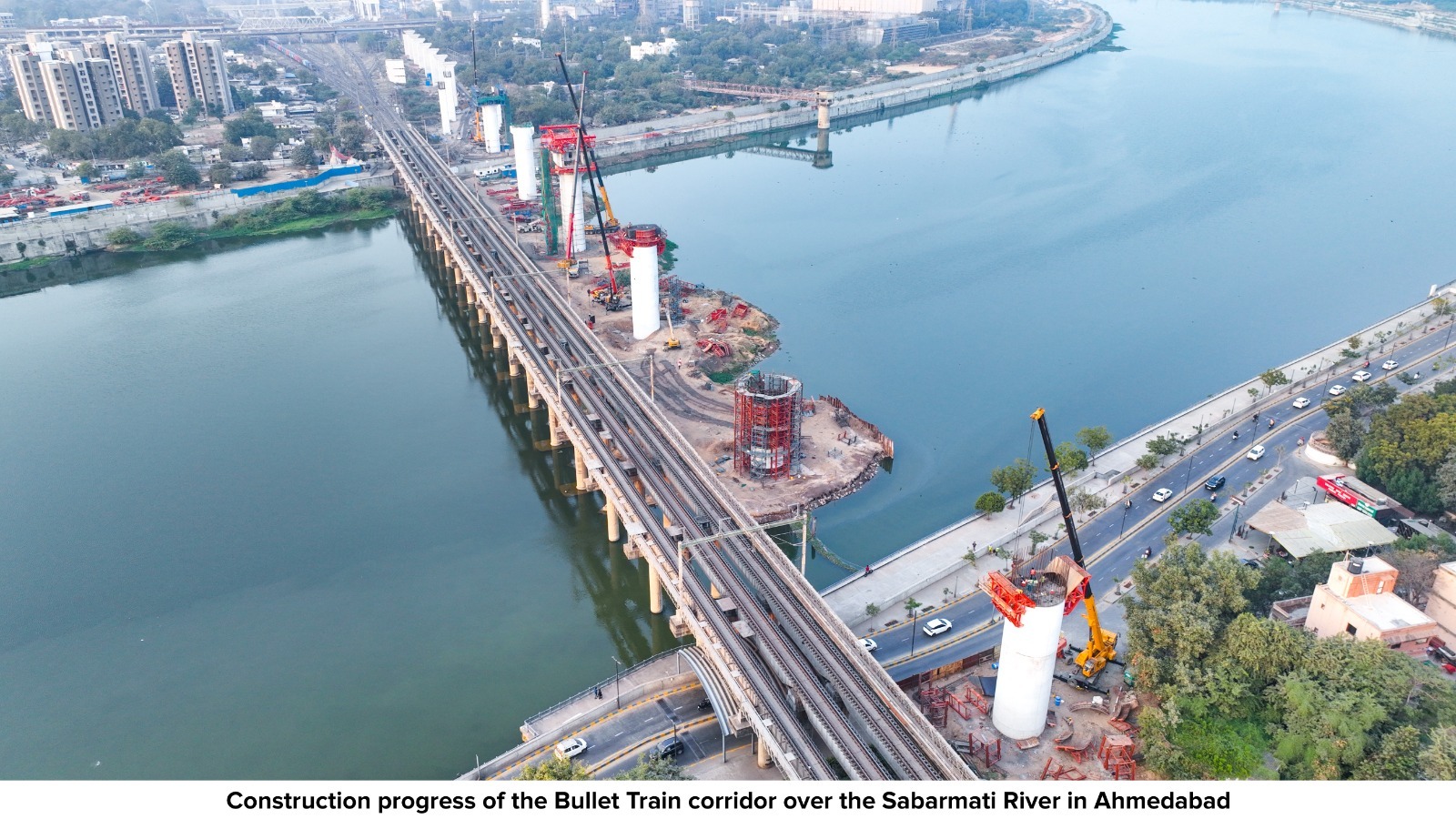The Mumbai-Ahmedabad Bullet Train project is accelerating Ahmedabad’s transformation into a major economic hub. The city is poised to benefit from enhanced connectivity, better infrastructure, and investment opportunities with the two high-speed rail stations—Sabarmati and Ahmedabad. The integrated transport ecosystem will enhance regional growth, improve mobility, and highlight India’s infrastructure capabilities.
Introduction:
Ahmedabad emerges as a key beneficiary of the Mumbai-Ahmedabad Bullet Train Corridor—India’s first high-speed rail project. With two strategically located stations, the city is uniquely positioned to become a major economic driver, boosting business, investment, and mobility across the western region.
Sabarmati & Ahmedabad Stations:
Ahmedabad is the only city along the corridor to host two bullet train stations—Sabarmati and Ahmedabad. These stations will be fully integrated with existing Indian Railways, metro lines, and bus services, offering seamless connectivity and enhancing real estate, commerce, and industrial growth along the corridor.

Multimodal Integration for Urban Mobility:
The Sabarmati Multimodal Transport Hub, located adjacent to the bullet train station, is designed to support efficient intermodal transfers. It will not only ease daily commutes but also drive commercial development in the area, turning the region into a high-growth transit-oriented zone.
Corridor Benefits:
- Improve access to Ahmedabad’s business and industrial zones
- Create job opportunities in real estate, tourism, and logistics
- Boost regional connectivity and reduce traffic congestion
- Position India as a leader in world-class transport infrastructure
Construction Update:
- The Ahmedabad station is being built above platforms 10–12 of Western Railway and connected to Kalupur Metro Station. Major structural works are almost complete.
- The Sabarmati station is progressing steadily with platform construction in progress.
- The bullet train viaduct will cross 31 key locations in Ahmedabad using advanced construction techniques such as Span-by-Span, FSLM, and Steel Bridges.

Alignment Details in Ahmedabad District:
| Total Alignment | 26 km |
| No. of Bullet Train Stations | 2 Nos. |
| Viaduct through Full Span Launching Method (FSLM) | 3.5 km |
| Viaduct through Span by Span Method (SBS) | 19 km |
| No. of Crossings | 31
Out of which 6 are through steel bridge |
Conclusion:
The Mumbai-Ahmedabad Bullet Train Corridor is more than a high-speed connection—it’s a transformative infrastructure initiative reshaping Ahmedabad’s urban landscape. By fostering connectivity, economic dynamism, and world-class urban development, the project is setting new benchmarks in modern transport and positioning Ahmedabad as a critical node in India’s growth journey.
Source: NHSRCL – Press Release | Images Credit: NHSRCL


